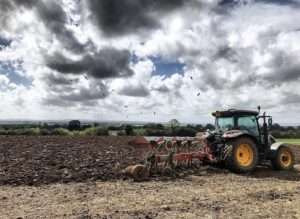It is a grey evening. Somerset’s cricket match today was disrupted by persistent breaks for rain and bad light.
In childhood, the closing days of the summer holidays were a harbinger of doom, it announced the imminent onset of a new school year. Perhaps it was also the time when the return of the darkness became apparent. Perhaps the greyness became more intense.
A vivid memory remains of an aunt standing in the low-ceilinged kitchen of my grandparents’ farmhouse. My aunt and uncle and their family would come to stay each summer, my uncle assisting with the harvest. My aunt stared out into the evening gloom and said, “Eight o’clock and it’s getting dark already”.
Of course the days had been getting shorter since the solstice, but it hadn’t seemed to notice. A couple of minutes each day hardly register when you were outside every evening. When the couple of minutes had accumulated into a couple of hours, the realisation came that summer was really past.
In memory, it is the darkness that remains as frightening. Darkness meant real darkness; there was not a single streetlight in the village, and apart from the lights from the windows of the scattered houses, there was a sense of overwhelming isolation. Once darkness fell, people went indoors, closing out the world of wind and rain. The outside world continued to exist only through the flickering black and white images on the television.
Years later, trying to articulate those childhood fears caused bafflement to the listener. “Surely the autumn and winter were cosy times when you could sit inside by the fire?”
“No, they weren’t. Sometimes I had to watch the news on the television, even if I didn’t understand it, to break the sense of isolation; to make the day seem real”.
“But how did that help?”
“It just did. It meant that the world and life was carrying on”.
Little things became sources of encouragement. A BBC piece about the springtime in New Zealand brought a feeling that while we headed into the cold darkness, there were people for whom the light was returning.
When I lived in Ireland, it was easy to understand how the Celtic people became so attached to the light and how they counted their seasons differently.While England still counts these days as summer, we are approaching the end of the first month of autumn in the Celtic calendar.
Walking out of a brightly-lit supermarket out on a grey, evening, the loss of the light still has the capacity to stir long off memories.


